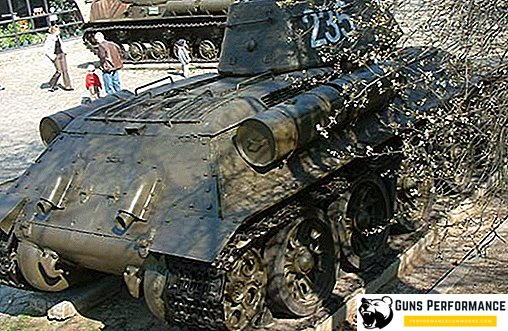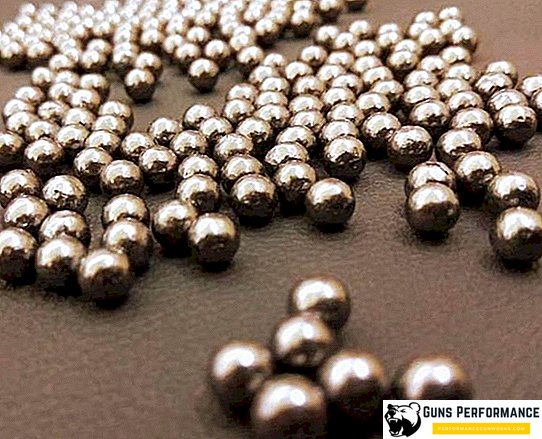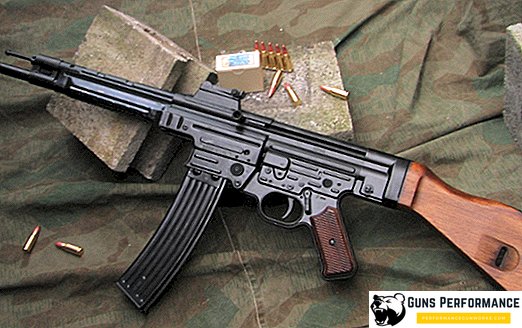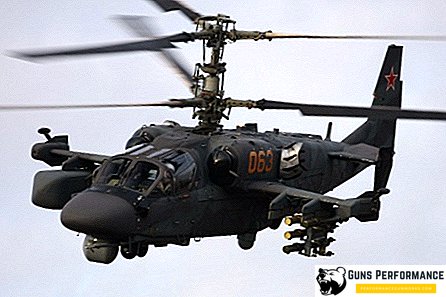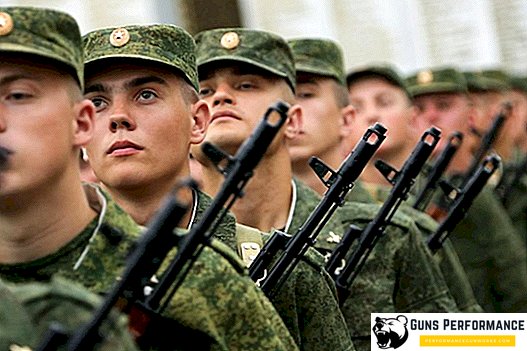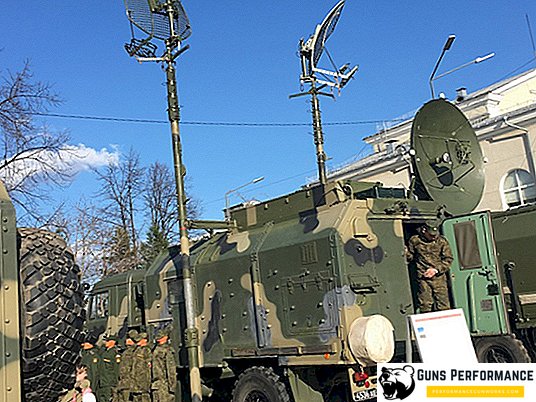The current state of the Strategic Missile Forces Rocket Forces of Russia suggests that this type of armed forces needs to upgrade existing combat systems and re-equip combat missile units with new types of weapons. The equipment of the RVSN units is equipped with proven R-36M and UR-100UTTH mine-launched missile systems, which still inspire terror in the whole of the Western Hemisphere. The new weapons are the “poplars” RT-2PM and RT-2PM2, as well as mine and mobile-launched missile systems. The newest Russian combat complexes are mobile APU "Yars" equipped with RS-24 missiles.

Despite the rather large arsenal of the Strategic Missile Forces, the time came when it was necessary to replace the old missile systems with newer rocket technology. This task should be handled by the newest Russian missile system Rubezh with the PC26 missile. The new rocket must not only replace aging missile systems on combat duty, but also have superior performance. The rearmament of the Strategic Missile Forces to new missiles must be carried out clearly, as quickly and painlessly as possible for the country's defense capability. It is planned to gradually re-equip combat units with new weapons. It takes into account the fact that the rocket strategic potential of Russia by 2020 should be at the same level as now.
New rocket for the Strategic Missile Forces of Russia. Its meaning and purpose
In modern conditions, when the restrictions of the START-2 treaty continue to operate, the Russian leadership has taken steps to strengthen the Strategic Missile Forces. The main task was to create a new missile system, the technical characteristics and parameters of which do not go beyond the current agreement. The subsequent appearance of the PC26 intercontinental ballistic missile caused confusion in the Pentagon’s offices. The missile created by its parameters did not go beyond the existing protocols, but according to other characteristics, the new missile system could pose a real threat to the promising missile defense system of the United States and its allies. The calculated characteristics of the new product allow us to say that a fundamentally new approach has been used in the design of rocket engines and in the control system.
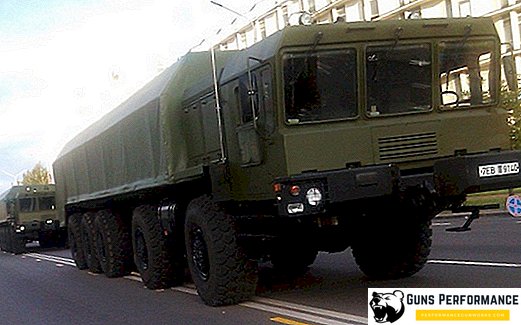
The task that confronted domestic designers was to create a new strategic missile system of increased accuracy. In addition, the new rocket, unlike its predecessors, should have only a mobile version of the base. It was decided to abandon universality in favor of reducing the launch weight of the rocket carrier. The new development was supposed to be a small-sized ICBM transported on a mobile self-propelled platform.
In 2006, the design bureau of the Moscow Institute of Heat Engineering began working on new weapons. Other scientific and technical organizations have joined the MIT work. The topic of research received the cipher "Boundary". The rocket, which appeared on the drawings, received the domestic designation RS-26 "Rubezh". In the Western classification, the new Russian strategic weapon has received the index SS-X-29. The predecessor of the rocket, the Yars missile system, had a similar designation in the Western classification SS-27 mod 2.
The novelty differs significantly from the previous generation of strategic missiles. The main differences lie in the combat control system of the missile in the active part of the flight. In addition, the new technology can be focused on the use of a new type of rocket fuel, which will significantly reduce the active part of the rocket flight path. Despite the fact that in order to improve the accuracy of hitting the active part of the missile’s flight should be at least 25 minutes, it was decided to use a different principle of operation of the cruise engines in the new product. The third stage of the rocket will be switched on periodically, only to give the head part some impulse. Such a scheme for the operation of the main engines will allow the head unit to change course and evade antimissiles of a potential enemy.
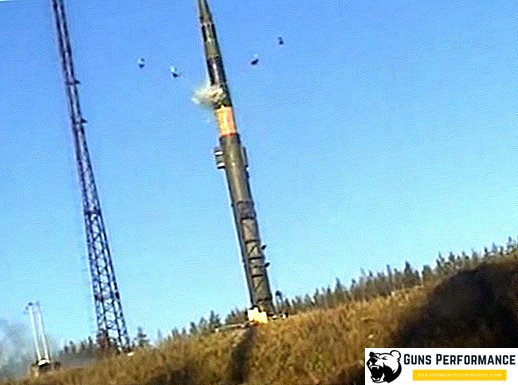
On a new missile, the warhead will be able to independently perform certain evolutions during the flight, reducing the likelihood of interception by antimissiles during the flight. The new MBR "Frontier" RS26 is manufactured using technology that is at the heart of the SLBM. In the design of the product there are no elements of resistance to external influences that are present in strategic missiles with a mine launch. The latest modification of the Russian Topol missiles had a dual base version, while the new missile system was fully designed for the mobile version.
Design features rocket PC26
For three years, painstaking work was carried out within the walls of MIT. In the design of the new complex, the main elements and components of the Topol and Yars mobile missile systems were used. Used traditional rocket scheme - a multi-stage rocket with a module that is responsible for the breeding of combat units. According to experts who have access to advance information, the new missile is a standardized Bulava missile, which is equipped with naval nuclear forces.

This is indicated by the presence of the first two stages, taken from the Bulava SLBM. The third stage with the main engine has a smaller diameter and fits in the starting midsection of the Bulava rocket. The new modified rocket configuration is due to the fact that it is planned to install a new type payload with separable warheads. Each warhead is equipped with an individual engine, providing maneuvering of the warhead during independent flight.
A new product must have a length not greater than all previous missiles to fit in a standard launch canister.
The main engines on each stage equipment are liquid fuel-based liquid propellant rocket engines consisting of high-boiling components, dimethylhydrazine and a nitrogen oxidizer. Rocket PC26 "Frontier" in the curb state should weigh no more than 30-40 tons. In accordance with the project, the new missile system should have a range of 6-8 thousand km. The minimum allowable range is 2 thousand km. It is allowed to increase the flight range of the warhead already in the process of combat operation of the product.
As for the warhead, the rocket was created for the delivery of warheads of various types, with a single warhead and with individual military weapons. According to the latest data, the combat use of a missile with a MIRV-IN is unlikely, therefore more emphasis is placed on equipping the product with a single MS. In the factory version, the combat equipment of the Rubezh missile should be similar to the equipment of the Yars missile system.
The mobile launcher for the new missile, like all other Russian mobile missile systems, was of Belarusian origin. For the first time, MZKT transporters were used to complete the Pioneer missile systems. Back in 2008, a contract was signed between the designers of the rocket and the Belarusian car makers to create a new conveyor, which should be smaller than the previous model. The wheeled platform should have a lower load capacity, only 50 tons compared to 80 tons of previous machines. Tractors must have a 12x12 wheel formula. For better maneuverability of the complex on rough terrain on the machine 1, 2, 5 and 6 axes are controlled. The power plant capacity is 650 hp ...
In full combat gear, the transporter, together with the launcher and the missile, weighs about 80 tons. The starting container has a length of 13 meters. The rocket can have a protective cap or be without it. The presence of this structural element is not fundamental.
Tests of new weapons
Rocket PC26 "Frontier" has received a completely new characteristics, which are currently classified. It’s almost impossible to get a real photo of the new missile system, so most of the photos and video footage of the new missile show the missile system with the Topol ICBM.
It is expected that the rocket will be capable of striking strategic targets that pose a threat to the country's defense capability and are located in adjacent territories. If desired, the rocket can be reoriented to targets located overseas. It is the universality of the new weapon that causes the greatest concern on the part of the military departments of Western countries. It is planned to install four warheads with a capacity of up to 300 KT on the product. Reducing the weight of the rocket was achieved through the use of new polymeric materials in the design. Accuracy of hitting the target is significantly increased due to the use of new technologies in the work of the main engines. The rocket has a fast and rapid start, so at the start of the rocket is difficult to detect. Further flight is carried out on an ever-changing trajectory. The evolution of the warhead in terms of speed and altitude is designed to reduce the threat of opposition from the enemy missile defense system.
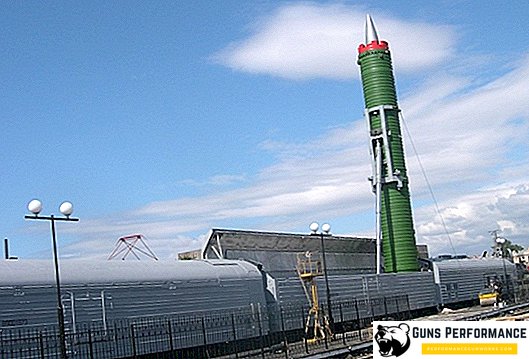
Separate warheads flying after separation independently have a speed that does not allow tracking of the flight by the systems currently available.
The first test flight of the new product took place in September 2011, at the Plesetsk cosmodrome. However, after the failure of the first-stage propulsion engine, the rocket fell at a distance of 8 km from the launch site.
The second launch from the Plesetsk cosmodrome took place on a target at the Kura test site located in Kamchatka. The next full-fledged launch of the RS26 rocket took place on October 24, 2012. New rocket launched from the missile test site Kapustin Yar. The training target was at the Sary-Shagan test site (territory of the Republic of Kazakhstan). During the successful flight, the telemetric tests of the new combat unit and the head-mounted shunting engines were conducted. To date, five launches of the new PC26 missile have been conducted. Completion of tests is scheduled for 2014. The test launches, which took place already in 2018, were marked by success. The rocket passed all stages of the flight in the acceptable parameters.
Production rocket PC26. Entering the troops
As expected, the Votkinsk Machine-Building Plant became the head office where the new rocket will be assembled. The company has extensive experience in designing and assembling intercontinental missiles of various types, starting with the most powerful Russian missile PRLB Bulava and tactical missiles of the Iskander complex. The production base of the enterprise today is sharpened by the release of domestic P24 missiles, which are equipped with the Topol-M and Yars strategic complexes.
The construction of the RS26 missile of the Rubezh missile complex in accordance with the terms of the State Defense Order was planned to begin in 2018. The arrival of a new strategic missile for equipping combat units is planned to begin with two missile divisions, in Vypolzov and in Irkutsk, where obsolete Topol-M missile systems need to be replaced. Starting from 2020, other missiles of the Strategic Missile Forces will be re-equipped with new missiles. It is planned to transfer a total of 50 Rubezh mobile missile systems with R26 ICBMs to combat units.

For reference: In the West, it is estimated that the Strategic Assistance Rocket Forces grouping will have up to 250 ballistic missile launchers. Only a quarter of this arsenal will fall on missiles equipped with a non-separable head. The remaining launchers will be equipped with the latest PC26 and PC28 missiles, equipped with an MUV with individual guidance. The composition of the missile units can enhance the upgraded PC24 missiles with multi-unit combat units.
It should be noted that the new rocket fits into the strategy of deploying the new mobile complex Barguzin rail-based. New railway complexes should fill the gap that appeared in the strategic nuclear forces with the decommissioning of the Molodets BZHRK. In parallel with the development of the project "Frontier", the designers of MIT prepared a draft technical documentation for the production of the rail-based PC26 rocket.
The appearance in the Russian Strategic Missile Forces of the new Rubezh mobile mobile missile systems has significantly increased the combat capability of domestic missile units. In addition, the new Russian rocket completely confused all the cards to Western countries. The existing missile defense system, in the creation of which enormous funds were invested, turned out to be practically powerless in the confrontation with the new Russian development.



